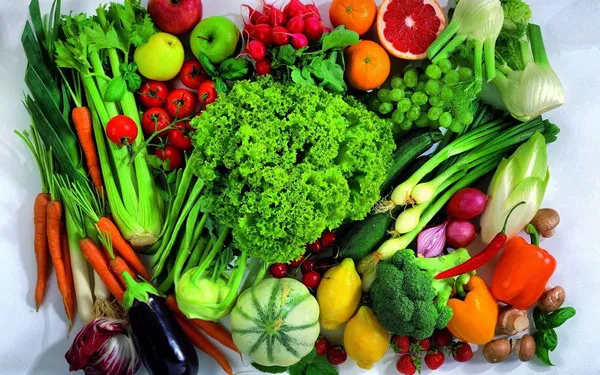A recent study published in Scientific Reports has highlighted the exceptional nutritional benefits of microgreens, revealing that these young edible plants are far richer in antioxidants and bioactive compounds than their mature counterparts. The study examined six different microgreens—broccoli, black radish, red beet, pea, sunflower, and bean—and assessed their potential as functional foods. The results suggest that incorporating microgreens into the diet could have significant benefits for global nutrition, especially in combating micronutrient deficiencies.
Background
With over 2 billion people around the world suffering from micronutrient deficiencies, the need for accessible, nutrient-dense foods has never been more urgent. Micronutrient deficiencies lead to a range of health problems, including weakened immunity, cognitive impairment, and increased susceptibility to diseases. As the global population continues to grow, food security and nutrition are at the forefront of global health concerns.
Microgreens, the young shoots of edible plants harvested between 7 and 21 days after germination, are known to have high concentrations of vitamins, minerals, and antioxidants. Their rapid growth, minimal resource requirements, and impressive nutritional profiles make them an attractive option for improving dietary quality, particularly in urban and resource-limited environments. Despite their growing popularity, there has been limited research on the precise nutrient composition of microgreens and how environmental factors (such as light intensity, temperature, and soil conditions) can influence their nutritional value.
About the Study
To fill this research gap, the study cultivated six different microgreens in a controlled growth environment. The microgreens studied were:
- Broccoli (Brassica oleracea)
- Black radish (Raphanus sativus)
- Red beet (Beta vulgaris)
- Pea (Pisum sativum)
- Sunflower (Helianthus annuus)
- Bean (Phaseolus vulgaris)
These microgreens were grown in peat-based media under controlled temperature and light conditions. The researchers then analyzed their nutritional composition, including:
- Ascorbic acid (vitamin C)
- Macro- and microelements (minerals)
- Organic acids
- Phenolic compounds
- Flavonoids
- Antioxidant activity
- Volatile aromatic compounds
The researchers also looked at how genetic traits influenced nutrient uptake and accumulation in the plants.
Study Results
The results of the study show significant variations in the nutritional profiles of the six microgreens, with each offering distinct health benefits.
Broccoli Microgreens:
Total Phenolic Content: 825.53 mg GAE/100 g fresh weight, the highest among the microgreens studied. Phenolic compounds are known for their antioxidant properties, which help combat oxidative stress and inflammation.
Iron (2610.42 μg/100 g) and Manganese (350.56 μg/100 g): Essential for red blood cell formation and metabolic processes.
Bean Microgreens:
Ascorbic Acid (80.45 mg/100 g): Rich in vitamin C, which is crucial for immune health and skin regeneration.
Potassium (416.05 mg/100 g), Phosphorus (4.88 mg/100 g), and Magnesium (74.15 mg/100 g): Key minerals for cardiovascular health and strong bones.
Sunflower Microgreens:
Calcium (148.63 mg/100 g): Particularly beneficial for bone health, making sunflower microgreens an excellent choice for populations at risk of osteoporosis.
Red Beet Microgreens:
Total Flavonoid Content (1625 mg rutin equivalent/100 g): Flavonoids are potent antioxidants that have been shown to support heart health.
Citric Acid (358.83 mg/100 g): Important for energy production and metabolic processes.
Black Radish Microgreens:
Highest Antioxidant Capacity: Known for its robust antioxidant properties, which protect the body’s cells from damage caused by free radicals.
Complex Aroma Profile: The study found that black radish had the most complex volatile aromatic compounds, which could enhance food flavors naturally.
Pea Microgreens:
Nitrate Levels: Pea microgreens had non-detectable levels of nitrates, which are often a concern in other types of leafy greens and microgreens.
The study also revealed that microgreens, compared to mature vegetables, had higher concentrations of essential vitamins, minerals, and bioactive compounds, along with improved mineral bioavailability. This suggests that microgreens could serve as an excellent dietary supplement, especially in regions where access to fresh produce is limited.
Conclusions
The findings of this study underscore the immense nutritional potential of microgreens. They not only provide higher concentrations of vitamins and minerals than mature vegetables but also offer superior bioavailability, meaning that the body can absorb and utilize these nutrients more effectively.
Some specific takeaways from the study include:
Red beet microgreens are an excellent source of flavonoids, beneficial for cardiovascular health.
Black radish microgreens possess strong antioxidant properties, making them ideal for boosting cellular protection.
Bean and sunflower microgreens provide essential nutrients like vitamin C, calcium, and potassium, supporting immune function and bone health.
Additionally, the study highlighted the significant impact of growing conditions on the nutritional content of microgreens. Environmental factors like light intensity, temperature, and soil quality all play a crucial role in determining the nutrient profiles of these plants.
Implications for Global Nutrition
The study suggests that microgreens should be integrated into dietary guidelines, particularly for urban populations and regions facing food insecurity. They offer a sustainable and highly nutritious alternative to resource-intensive crops, which could help address global malnutrition.
Microgreens’ ability to grow quickly, with minimal resources and space, makes them an ideal solution for enhancing food security, particularly in urban areas. By promoting the cultivation and consumption of microgreens, communities could combat nutrient deficiencies and improve overall health outcomes.
Future Directions
While this study provides valuable insight into the nutrient profiles of microgreens, further research is needed to optimize growing conditions and better understand how these plants can be used to address specific micronutrient deficiencies. Researchers should continue exploring the role of microgreens in improving public health, particularly in regions with high rates of malnutrition. With more widespread adoption and cultivation, microgreens could play a key role in the future of global nutrition and food security.
You Might Be Interested In:
-
Infant Exposure to Herpes Virus May Cause Memory Problems Later in Life
-
Lower Vitamin B12 Levels Could Impact Brain Function in Older Adults
-
Do Prenatal Antibiotics Weaken Breast Milk Immunity? A New Study Aims to Find Out


